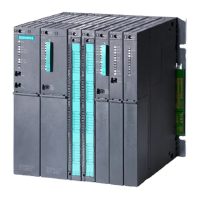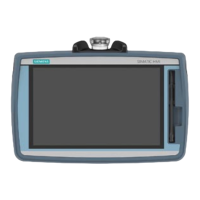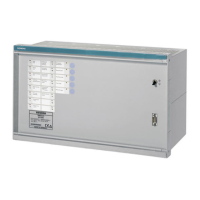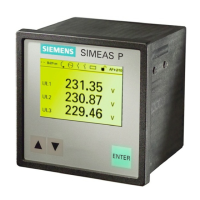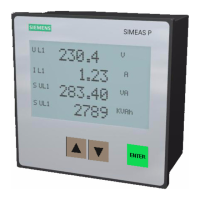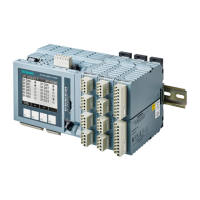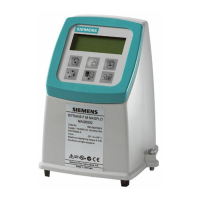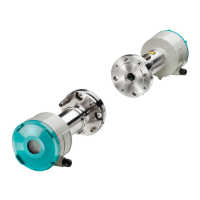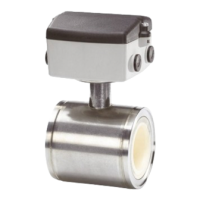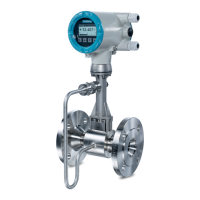Do you have a question about the Siemens SIMATIC ST-1500 and is the answer not in the manual?
Explains the warning notice system, including danger levels and symbols.
Defines the qualifications required for operating the product/system safely.
Provides guidelines for the correct usage of Siemens products and components.
Lists registered and other trademarks used in the publication.
States the publisher's liability limitations regarding publication consistency.
Outlines the goal of the documentation and its support for users.
Lists essential knowledge needed to understand the document's content.
Specifies which modules the document applies to, including firmware versions.
Explains how notes and markings are used for important information.
Provides resources for further help and information, including online links.
Describes system and Getting Started manuals for configuration and installation.
Explains product manuals for module-specific details and technical specifications.
Details function manuals for general topics and provides download links.
Refers to combined documentation files available online.
Explains the personal workspace for managing documentation and support requests.
Describes how to combine and export manuals within the mySupport platform.
Guides users to access product data like drawings and manuals via mySupport.
Points to resources for solving automation tasks with various tools and examples.
Introduces a tool for selecting, configuring, and ordering automation devices.
Explains a tool for commissioning and maintenance activities on SIMATIC S7 stations.
Describes a tool for analyzing PROFINET networks and checking wiring.
Introduces a network planner tool for dimensioning and optimizing PROFINET installations.
Summarizes performance features of modules for counting, measuring, and position input.
Defines the term "technology module" used in the documentation.
Introduces configuring and controlling technology modules via configuration software and user program.
Explains capturing and evaluating pulse/incremental signals for counting.
Defines configurable counter value range and response at limits.
Describes configuring and setting the initial counter value.
Explains how gates define the period for capturing counting signals.
Details saving current counter value as Capture value using external reference signals.
Explains loading the counter with a start value using an external reference signal edge.
Describes specifying a range to prevent digital output switching around comparison values.
Explains using modules for position detection via SSI absolute encoder interface.
Mentions support for Gray-code and Dual-code SSI absolute encoders.
Describes saving current position value as Capture value using digital input edges.
Explains hysteresis for comparison values to prevent rapid switching.
Details specifying frame length for SSI absolute encoders and value range.
Explains returning unprocessed SSI frame bits, including special bits and errors.
Explains how counting limits are violated and status bits are set.
Illustrates counting process termination or continuation after overflow and limit violation.
Describes controlling the software gate via a control bit.
Explains opening/closing the hardware gate using signals at digital inputs.
Defines the internal gate state based on software and hardware gate configurations.
Explains counting starting from the configured start value when the gate opens.
Describes counting continuing from the current value after the gate reopens.
Details saving the current counter value as a Capture value using reference signals.
Explains configuring hardware interrupts for the Capture function.
Explains saving the current position value as Capture value using reference signals.
Explains configuring hardware interrupts for the Capture function.
Details setting the counter to a pre-defined start value with an external reference signal.
Illustrates single synchronization triggered by edges at a digital input.
Illustrates periodic synchronization triggered by edges at a digital input.
Explains triggering synchronization by edges at a digital input.
Illustrates periodic synchronization by edges at a digital input.
Explains triggering synchronization at signal N of the encoder input.
Illustrates periodic synchronization at signal N.
Shows periodic synchronization at signal N dependent on a digital input.
Explains specifying two comparison values to control digital outputs.
Describes using control bits to manage digital outputs independently of technological functions.
Compares counter value against set limits to switch digital outputs.
Defines digital output activation based on counter value within a range.
Defines digital output activation based on counter value within a range.
Defines digital output DQ1 activation based on counter value between two comparison values.
Explains setting digital output for a specific duration when counter value matches a comparison value.
Describes setting digital outputs to 1 or 0 via control bits or comparison events.
Defines digital output activation based on position value within a range.
Defines digital output activation based on position value within a range.
Defines digital output DQ1 activation based on position value between two comparison values.
Explains setting digital output for a specific duration when position value matches a comparison value.
Describes setting digital outputs to 1 or 0 via control bits or comparison events.
Defines digital output activation based on measured value being greater than or equal to a comparison value.
Defines digital output activation based on measured value being less than or equal to a comparison value.
Defines digital output DQ1 activation based on measured value between two comparison values.
Defines digital output DQ1 activation based on measured value outside two comparison values.
Lists available measuring functions: Frequency, Period, and Velocity measurement.
Explains how frequency is measured and updated.
Explains how period duration is measured and returned.
Explains how velocity is measured and scaled.
Details measuring range limits for frequency, period, and velocity for SSI encoders.
Explains how the module assigns time values to SSI frames for measurement calculation.
Explains how frequency is measured and updated for SSI encoders.
Illustrates hysteresis effect on digital output switching around comparison values.
Illustrates hysteresis effect on digital output switching around comparison values for SSI encoders.
Explains triggering hardware interrupts for events like comparison or overflow.
Describes triggering diagnostic interrupts for error conditions.
Explains using modules for position detection in Motion Control applications.
Details 24V/TTL incremental and pulse encoder signal types and their usage.
Describes RS422 incremental and pulse encoder signal types and their usage.
Introduces signal evaluation options for incremental encoders to improve resolution.
Explains evaluating edges of signal A based on signal B level for counting.
Explains data processing in isochronous mode for synchronized input/output.
Provides a link to a detailed description of isochronous mode.
Introduces configuring TM Timer DIDQ modules and their system environments.
Explains capturing and evaluating signals for counting with TM Timer DIDQ.
Explains capturing and evaluating signals for counting with TM Timer DIDQ.
Details 24V incremental and pulse encoder signals for TM Timer DIDQ.
Explains isochronous mode for TM Timer DIDQ counter value acquisition.
Introduces configuring digital input modules and their system environments.
Explains detecting and summing events using pulse signals.
Defines configurable counter value range and response at limits for digital input modules.
Describes configuring and setting the initial counter value for digital input modules.
Explains how gates define the period for capturing counting signals in digital input modules.
Explains how limits are violated and event bits are set for digital input modules.
Explains software and hardware gate control for digital input modules.
Defines the internal gate state based on software and hardware gates for digital input modules.
Defines how STS_DQ bit is set based on counter value and comparison values.
Defines STS_DQ bit setting based on counter value and comparison values.
Defines STS_DQ bit setting based on counter value and comparison values.
Defines STS_DQ bit setting based on counter value between comparison values 0 and 1.
Defines the term "technology module" in the context of High_Speed_Counter.
Introduces configuring and using the High_Speed_Counter technology object in STEP 7.
Explains selecting the operating mode for parameter assignment via technology object.
Outlines the step-by-step procedure for configuring the technology object.
Details the process of adding a new technology object in the project tree.
Guides users on opening and navigating the configuration window.
Explains establishing the connection between the technology object and the module.
Lists available signal types for counter inputs and their parameters.
Explains selecting edges for signal evaluation (Single, Double, Quadruple).
Details using filter frequency to suppress noise at counting inputs.
Specifies how counter inputs are switched based on sensor type for TM Count.
Specifies whether encoder outputs symmetric (RS422) or asymmetric (TTL) signals.
Defines reactions triggered by signal N, including synchronization or capture.
Defines the frequency of synchronization events at signal N or digital input.
Sets high/low counting limits and the initial start value for the counter.
Configures reactions upon limit violation and gate start.
Specifies functions triggered by digital input switching and configures input delay.
Explains operating modes and conditions for digital output switching.
Sets comparison value 0 for TM Count/PosInput and Compact CPU based on operating mode.
Sets comparison value 1 for TM Count/PosInput and Compact CPU based on operating mode.
Specifies the count direction for which the function is valid.
Defines the duration for which a digital output is active at a comparison value.
Configures hysteresis range around comparison values to prevent output switching.
Selects the measured variable (Frequency, Period, Velocity, or SSI frame).
Defines the time base for returning velocity measurements.
Specifies count pulses per unit for velocity measurement based on encoder and evaluation.
Explains how to program the High_Speed_Counter instruction in the user program.
Guides on how to call the High_Speed_Counter instruction in the user program.
Explains the purpose of the High_Speed_Counter instruction for controlling module functions.
Guides on modifying parameters using Set tags and static tags.
Explains setting digital outputs via instruction or manual control tags.
Explains how to change count direction via user program and static tags.
Lists input parameters for the High_Speed_Counter instruction.
Lists output parameters for the High_Speed_Counter instruction.
Lists error codes for the High_Speed_Counter instruction with their descriptions.
Lists static tags for High_Speed_Counter, including command flags and status flags.
Guides on using the commissioning editor for function tests and parameter monitoring.
Explains using diagnostic functions to monitor counting and measuring operations.
Introduces configuring and using the SSI_Absolute_Encoder technology object in STEP 7.
Explains selecting the operating mode for parameter assignment via technology object.
Outlines the basic procedure for configuring the SSI_Absolute_Encoder technology object.
Details the process of adding a new SSI_Absolute_Encoder technology object in the project tree.
Guides users on opening and navigating the configuration window for SSI_Absolute_Encoder.
Explains establishing the connection between the technology object and the TM PosInput module.
Configures SSI encoder parameters like frame length, code type, transmission rate, and parity.
Specifies the most significant bit number for the position value frame.
Inverts values supplied by the SSI absolute encoder to adapt direction.
Describes setting frame length, LSB, and MSB bit numbers.
Explains returning unprocessed SSI frame bits, including special bits.
Specifies functions triggered by digital input switching and configures input delay.
Explains operating modes and conditions for digital output switching.
Sets comparison value 0 for SSI_Absolute_Encoder based on operating mode.
Sets comparison value 1 for SSI_Absolute_Encoder based on operating mode.
Specifies the direction of position value change for which the function is valid.
Defines the duration for which a digital output is active at a comparison value.
Configures hysteresis range around comparison values for SSI encoders.
Selects the measured variable (Frequency, Period, Velocity, or SSI frame) for SSI encoders.
Configures the interval for updating measured values for SSI encoders.
Defines the time base for returning velocity measurements.
Specifies increments per unit for velocity measurement for SSI encoders.
Provides examples of SSI frame formats with encoder specifications.
Explains how to program the SSI_Absolute_Encoder instruction in the user program.
Guides on how to call the SSI_Absolute_Encoder instruction in the user program.
Explains the purpose of the SSI_Absolute_Encoder instruction for controlling module functions.
Guides on modifying parameters using Set tags and static tags.
Explains setting digital outputs via instruction for different cases.
Describes handling errors, setting the Error parameter, and acknowledging error messages.
Lists input parameters for the SSI_Absolute_Encoder instruction.
Lists output parameters for the SSI_Absolute_Encoder instruction.
Lists error codes for the SSI_Absolute_Encoder instruction with their descriptions.
Lists static tags for SSI_Absolute_Encoder, including command flags and status flags.
Guides on using the commissioning editor for function tests and parameter monitoring.
Explains using diagnostic functions to monitor position input and measuring functions.
Explains how to use technology modules like TM Count and TM PosInput.
Guides adding technology modules for hardware configuration in STEP 7.
Details parameter assignment options for SSI absolute encoders.
Configures module response (continue, substitute value, keep last) when CPU stops.
Specifies the value output to DQ0 during CPU STOP for Compact CPUs.
Specifies the value output to DQ1 during CPU STOP.
Explains enabling diagnostic interrupts for wire breaks and other errors.
Defines how channel counting/measuring functions are configured and controlled.
Lists parameters for SSI absolute encoders, including signal type, frame length, and code type.
Specifies the external reference signal for saving a new reference mark.
Specifies count pulses per revolution for incremental/SSI encoders.
Defines the speed in rpm corresponding to 100% reference speed.
Points to additional configuration via axis technology object for Motion Control.
Explains setting events to trigger hardware interrupts per channel.
Lists available hardware interrupts (Capture, Sync, Gate, Overflow, etc.) and their conditions.
Sets parameters for each channel in counting operating mode.
Specifies whether a channel is enabled or disabled.
Configures input delay to suppress signal errors at digital inputs.
Configures module response (stop or continue counting) upon limit violation.
Specifies which edge the counter counts (rising, falling, both).
Specifies the counting direction (Up or Down) for the counter.
Controls STS_DQ feedback bit to manage digital output module's digital output.
Specifies functions triggered by respective digital input (Gate start/stop, Invert direction).
Sets the maximum counting limit for the counter.
Sets the minimum counting limit for the counter.
Sets the initial value for counting.
Sets the first comparison value for controlling output.
Sets the second comparison value for controlling output.
Enables display and evaluation of hardware diagnostics for modules.
Describes Siemens' comprehensive service offering for automation and drive technologies.
Provides access to online information for Service & Support.
Offers support in planning and designing projects, including consultations.
Provides expert advice on technical questions regarding products and systems.
Offers practical know-how training directly from the manufacturer.
Provides support for project engineering and development services.
Offers services for commissioning and maintenance to ensure plant availability.
Explains support for preventing standstill with a worldwide network and logistics.
Offers assistance in reducing downtime and costs with worldwide repair facilities.
Offers optimization services to increase productivity and reduce costs during the service life.
Provides support for modernization from planning phase to commissioning.
Describes select service packages for automation and drives systems, with examples.
Guides users to find contact persons via an online database.
| Brand | Siemens |
|---|---|
| Model | SIMATIC ST-1500 |
| Category | Measuring Instruments |
| Language | English |
